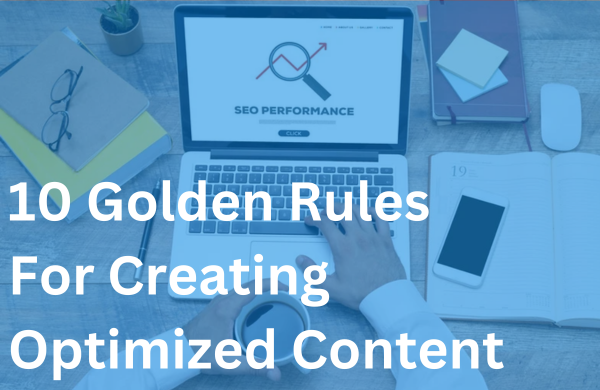In today’s technological landscape, there is an increased reliance on mobile devices. A What’s the Big Data report states that 45.59% of internet traffic in North America comes from mobile devices. Companies must ensure they are reaching that target audience.
Mobile-first indexing is an SEO practice that prioritizes mobile users over desktop web users targeting people who access the Internet through mobile devices. It looks at mobile pages instead of desktop pages for crawl page information, which is different than how Google used to index websites.
Read on to learn how to integrate mobile indexing into your SEO strategies.
What Is Mobile-First Indexing?
Mobile-first indexing is essential for companies wishing to rank on Google search pages.
Google uses an index that catalogs internet websites. The system has web crawlers that crawl the internet and scan new websites. When they find sites that provide user value, they add them to the index.
When users enter relevant search terms, Google will provide results based on the sites it has indexed.
The search engine once prioritized desktop formats over mobile ones. But now that mobile has become such a popular way to access the Internet, Google has prioritized mobile indexing.
Mobile-First Indexing and SEO
So, how does the Google mobile-first strategy impact companies? Let’s say you have a website that looks great on your desktop, but not so great on a mobile device, like photos get wonky or text is difficult to read. Google will index the low-quality mobile version which could potentially reduce your rankings if the user experience is worse on phones.
The bottom line is, that no matter how good your site looks on a desktop, it needs a great mobile design to back it up. If your site doesn’t look good on mobile, it won’t rank highly in Google search engines.
Mobile-First Indexing Best Practices
Prioritizing page speed for mobile users
Mobile users want their information delivered quickly. On-the-go users can’t afford to wait around for content to load. If your website doesn’t load right away, they’ll likely leave to visit a faster site.
Poor connections can also impede the loading experience. Your website must load as quickly as possible to prevent issues when users are in areas with low connectivity.
You can improve your page speed by compressing images, minimizing codes, utilizing content delivery networks (CDNs), and leveraging browser caching (a temporary storage space for recently downloaded pages).
Accelerated Mobile Pages (AMP) can also speed up site load times. This open-source initiative will provide a seamless experience for mobile users.
Importance of mobile-friendly and responsive web design
A mobile-friendly website design works on two levels. For one, a Google mobile site will rank higher on search engine pages. When combined with other SEO strategies, the site will appear on the first pages of Google to drive engagement, conversions, and profitability.
People who use your site on mobile will also have a better experience. They will see your site more clearly when they search for information. You will improve consumers’ onsite experience, making taking action easier and reducing bounce rates.
Ensuring crawlability of the website for mobile indexing
There are several ways to ensure your site is optimized for mobile-first indexing. The first is to verify crawlability. You must follow strategies that make it easy for Google to find your pages and crawl them to determine their value.
Your pages will be more crawlable if you use a structured data markup that helps Google understand your content. Avoid CSS, JavaScript, and images that can block Google. Audit your site regularly to ensure no other factors block search engines.
Crafting mobile-friendly content
The Google mobile version of your website should provide mobile-friendly content. Mobile users want to digest content quickly and easily. With limited real estate, you must provide snippets that deliver crucial information using minimal words and text.
Use headlines and bullet points to make information easy to find. Write short paragraphs so mobile users aren’t intimidated by long sections of text. Ensure all images are formatted accordingly.
Harnessing keywords for mobile search
Google mobile SEO is a critical factor in mobile-first indexing. Keywords play a crucial role in how mobile users find data.
Research reveals that mobile users often rely on voice search, which incorporates more conversational queries. Long tail keywords and natural language phrases will best align with these approaches. They will increase the likelihood that your website will appear in search engine results.
Navigating the mobile-local connection for local SEO
A lot of the time people searching on phones are looking for something local to their geographic location. They want information on nearby businesses and the products or services they sell.
Update your Google My Business listing to optimize your websites for mobile-local connections. Ensure your address, phone number, and business hours are updated. Photos and customer reviews will make your site more findable in local searches.
Utilizing featured snippets for mobile sites
Featured snippets are another powerful mobile-first indexing tool. Snippets provide brief answers to popular search questions at the top of Google search engines and encourage searchers to get the information they’re looking for without having to visit your website. When websites show up for featured snippets, you establish trust and credibility in your industry.
Addressing common consumer questions can increase the likelihood that your content will appear as a snippet. Consider the questions your customers ask most often and provide answers in your blog content and website copy to make your site more visible in search engines.
Ready to Optimize Your Website for Mobile-First Indexing?
Mobile-first indexing is more than a suggested web strategy. It is a necessity in today’s increasingly mobile-focused landscape to help you connect with more consumers, increase conversions, and remain competitive.
Optimizing crawlability, keyword strategy, content scannability, local SEO, optimizing for featured snippets, and improving page speed will make your site more mobile-friendly.
Brillity Digital offers assistance with SEO, PPC, conversion rate optimization, web design & development, email marketing, and organic social media. We’ll ensure your site functions well on all platforms.
Contact us to learn more about our comprehensive marketing services.





